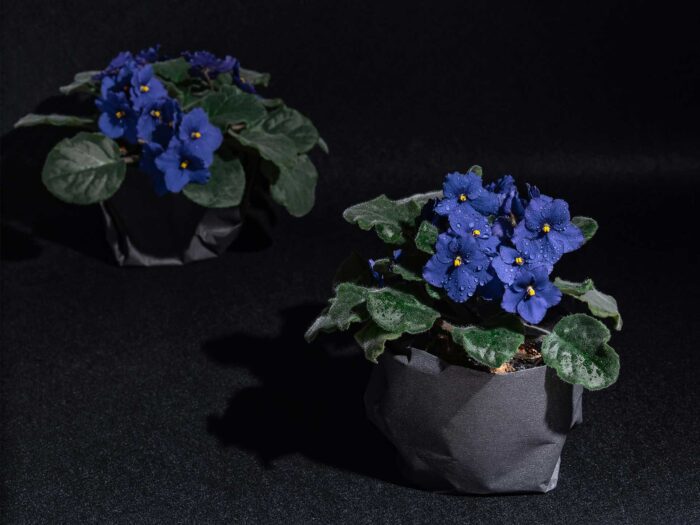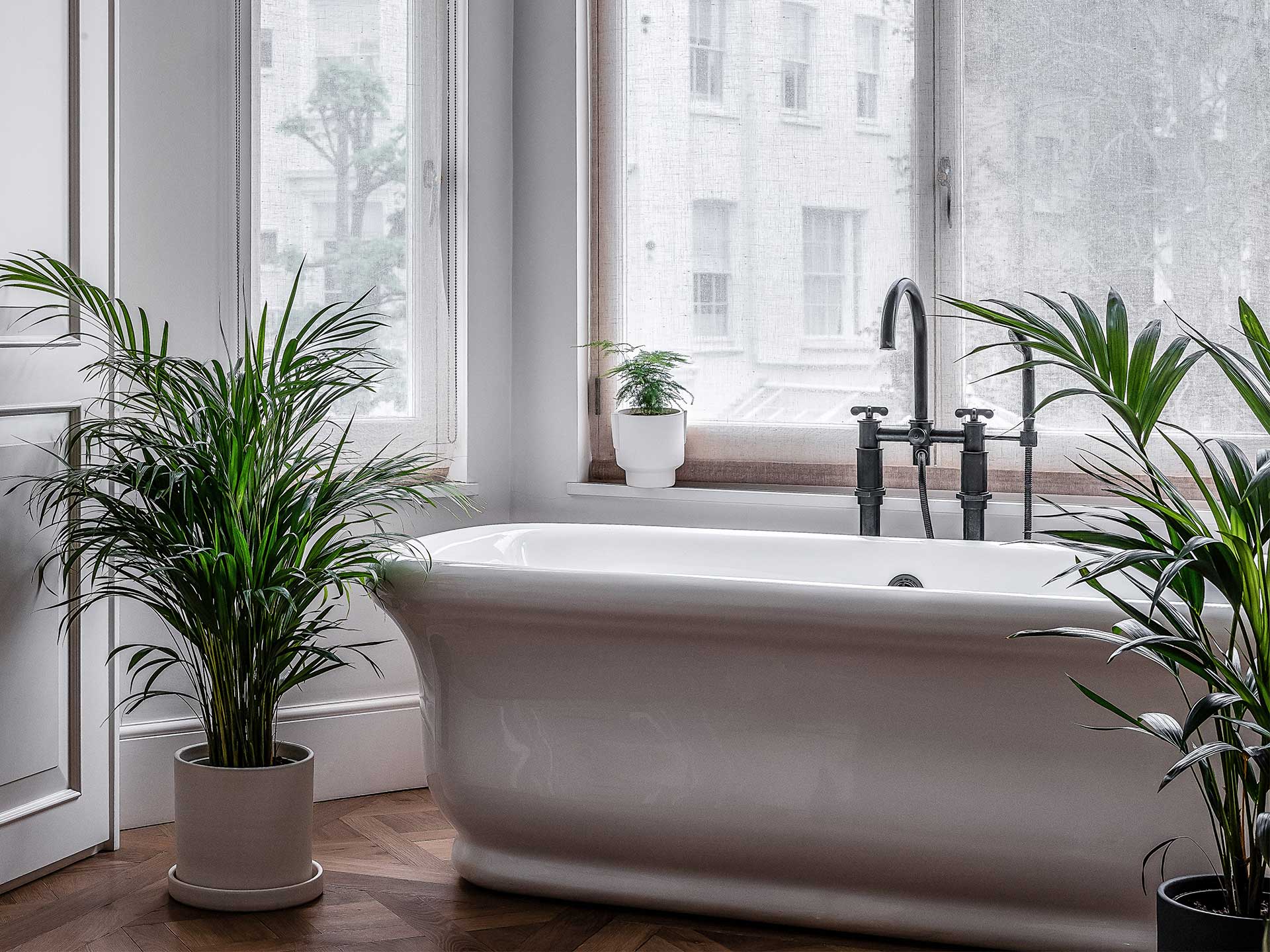
Image credit: Leaf Envy
Best bathroom houseplants for your home
Filling your home with greenery is proven to reduce stress. This pick of the best houseplants for your bathroom can transform it into a tranquil space to relax in.
It doesn’t matter what size or style your bathroom is, bringing biophilic design in through houseplants can help you bring in the outdoors and create a spa-like bathroom you’ll look forward to escaping to after a busy day.
Will Williams from Soto Gardens says, “When thinking about plants for your bathroom consider those that can survive lower light levels and appreciate a humid environment. Great examples are the rubber plant or peace lily. Indoor plants do not only help purify the air but they can soften a scheme, and bring texture and natural tones. We love styling plants with candles and books on bathroom shelves to add character and bring a spa like ambiance.”
Here are the 10 best plants for your bathroom.
Peace lily
The peace lily gets its name from the fact its glossy white flowering spathes look like white flags, the symbol of peace. They tend to flower in early spring with the blooms lasting around four weeks. If your peace lily isn’t blooming, it may be in too shady a spot.
When it comes to maintenance, RHS say that the peace lily will be happy in a warm position with plenty of indirect light. They also prefer to drink rainwater than tap water. A peace lily should grow to around 0.5cm in height.
Will from Soto Gardens says, “The pretty peace lily plant brings a sense of calm to your home, making it a perfect addition to a bathroom. This is one of our most popular indoor plants thanks to its ability to purify the air.”
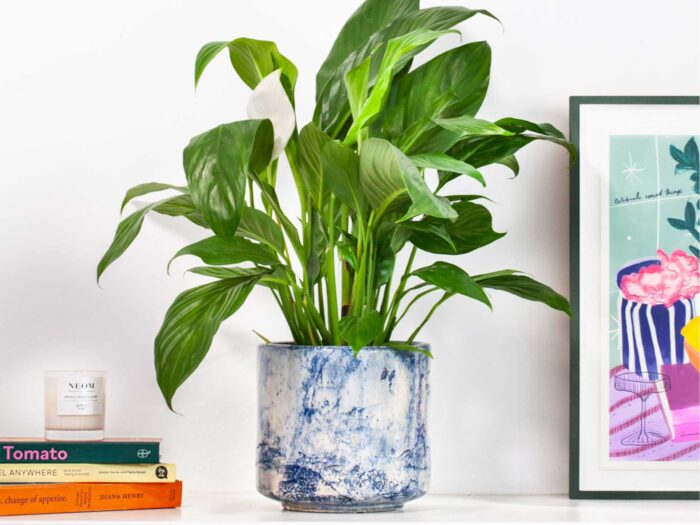
Try ferns to bring texture
Ferns are one of the oldest of the plant groups, and have been on earth for hundreds of millions of years. There are over 10,000 known species of fern, and they’re found in nearly every environment. Ferns’ unique compound leaves are called fronds and they’re known for their ornamental beauty. Ferns thrive in high humidity environments, making them one of the best bathroom houseplants.
To look after your ferns, keep the soil moist but not soaked. They’ll only need watering every one to two weeks and you can mist the fronds to keep them hydrated.
Pop them near a windowsill, so they get filtered sunlight, but don’t put them in direct sunlight, as it can scorch their fronds.
By grouping a collection of ferns together in your bathroom you can create a microclimate of higher humidity and if you get varying types (the Boston fern, bird’s nest fern and Maidenhead fern all thrive in bathrooms), they’ll make a visual statement and look great together.
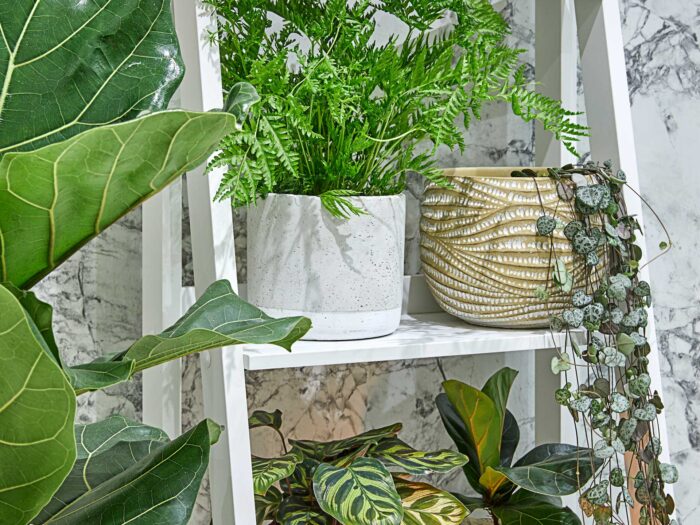
Swiss cheese plants are a bathroom houseplant favourite
The monstera deliciosa, known as the Swiss cheese plant, thanks to its beautiful holey leaves (these are called fenestrations) originated in Central and South America. But it wasn’t until the mid-19th century that it was brought the UK and cultivated.
Swiss cheese plants grow to around three feet indoors, although in their natural tropical rainforest environment they can grow to up to 65 feet tall, as their aerial roots attach to other trees as they grow tall to reach the light beyond the forest canopy. Little Botanical Company sell a natural coya fabric-wrapped moss pole, which can help support the climbing branches and leaves.
These beautiful plants are low-maintenance and love bathrooms, as they’re reminiscent of their original rainforest homes. Water them around once a week in the summer months and in the winter you can stretch that to every 7-10 days. They’ll benefit from being fed with plant food every couple of months.
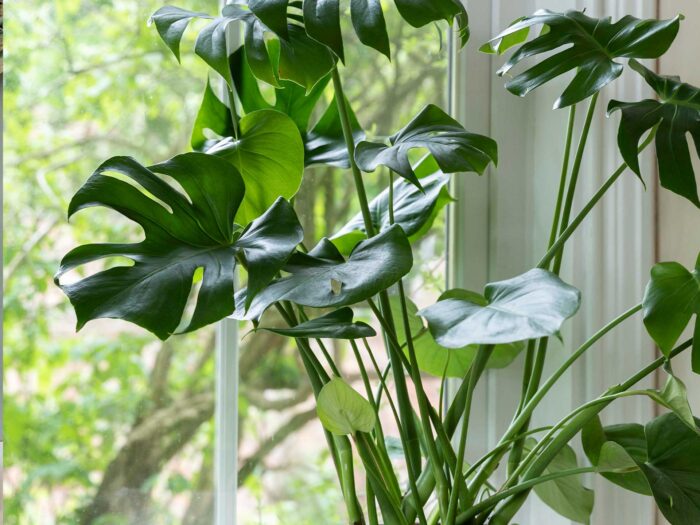
Satin pothos for small bathrooms
If you have a small bathroom, then the lovely satin pothos is a good choice. Another plant typically found in tropical forests, the satin pothos plant is native to Southeast Asia and grows in Indonesia, Malaysia and the Philippines. Satin pothos has heart-shaped leaves, and got its name thanks to its velvety texture and silvery, light green variegations which give a satin-like appearance.
It can survive in relatively low-light conditions (direct sunlight can scorch its leaves) so place it somewhere that has filtered sunlight or partial shade. Keep the soil moist, but not overwatered so it doesn’t damage the roots. Satin pothos works well in hanging baskets or potted on shelves, as they’re a trailing plant, whose leaves will tumble over the sides.

Air plants are low-maintenance bathroom houseplants
Unique air plants, also known as Tillandsia, are part of the Bromeliaceae family. Most plants rely on soil to absorb their water and nutrients, but air plants absorb their moisture and nutrients from the air, through small structures on their leaves called trichomes.
They can thrive in a variety of environments and make great bathroom plants as they require minimal watering. For a vibrant pop of colour, the pink quill air plant has striking hot pink and violet plumes.
Given the fact they don’t need soil, you can be creative in the way you display an air plant, like upside down in Habulous’ brilliant ceramic jellyfish pots. Habulous use a variety of different air plants to create different styles of jellyfish. It adds, “Each pot is hand-pinched before being bisque-fired, then individually illustrated and dipped in our own unique turquoise glaze. They are then fired and carefully hand-strung.”
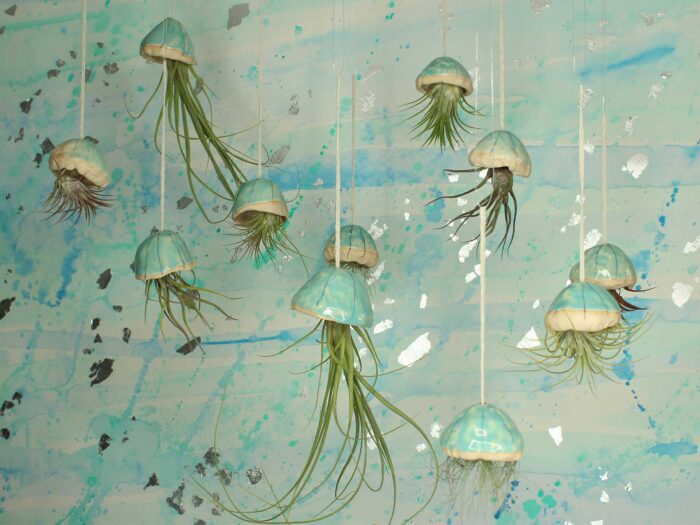
Rubber plants
Will from Soto Gardens says, “The rubber plant, also known as Ficus elastica, features large, glossy leaves which bring grandeur to bathrooms. With its robust structure and easy to care for nature, it is a popular choice. It appreciates being misted to keep leaves glossy and so is a great choice for humid environments like bathrooms. Wipe the leaves with a damp cloth to remove dust and keep them shiny.”
In Feng Shui, rubber plants are symbolic for good fortune and are associated with abundance and prosperity. They’re thought to bring positive energy and good luck.
Rubber plants are fairly low-maintenance and can withstand occasional fluctuations in temperature and humidity. Regular pruning can help manage the height and shape of your rubber plant.
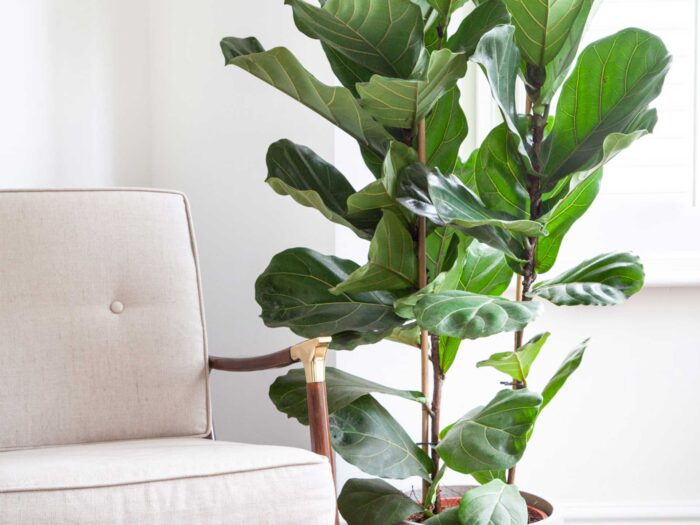
Beautifully patterned calathea
With intricate and vibrant leaf patterns that look like they have been painted on, the calathea is a sure-fire hit to add a statement in any room of the house. Their ability to thrive in high humidity make them one of the best bathroom houseplants.
Firstly, choose the right spot in your bathroom: calatheas like gentle, filtered sunlight, so put them near a window, but not in direct light.
Water your calathea every one to two weeks and make sure the soil is kept moist but not waterlogged. It’s a good idea to water using room temperature water, as very cold water can shock the plant. Prune the leaves regularly to keep them looking their best, getting rid of any dead or yellowing leaves.
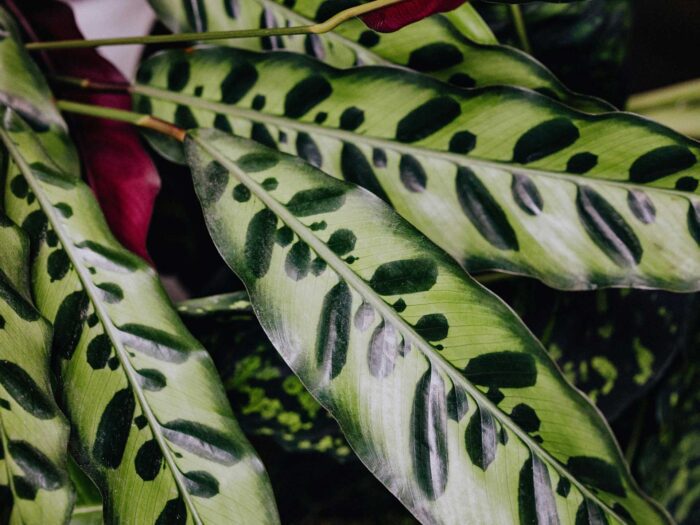
Orchids add colour and touch of elegance
If you’re going for the spathroom feel (a recently coined portmanteau of spa and bathroom) orchids are both an elegant and calming addition.
Orchids like bright natural light, although not direct sunlight, so place them near a window. Try to keep the bathroom temperature as regulated as possible for an orchid’s optimum growth, not too hold or cold, and keep them away from any heating or cooling vents.
Orchids love the high humidity of a bathroom. If you need to add humidity, you can buy a plant mister to mist the leaves or place a humidity tray near the plant with water and pebbles.
Orchids also love good air circulation, so make sure you open your windows frequently and don’t let the bathroom get too stuffy. Potting your orchid in a specific orchid pot or a basket is an additional way to allow for good airflow and drainage.
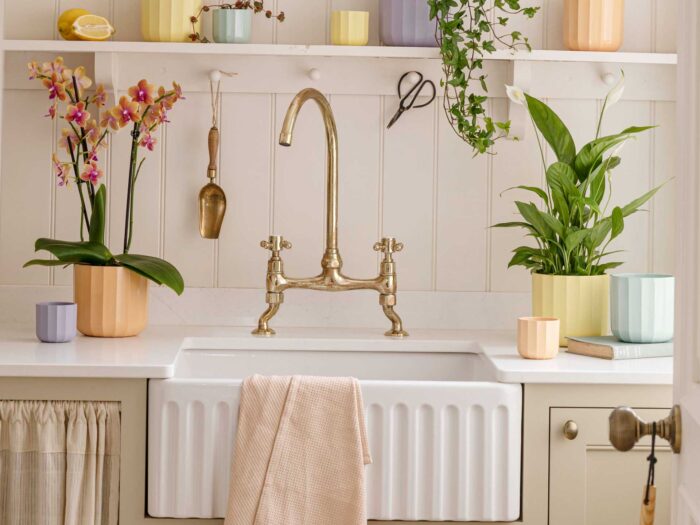
Areca palms are a statement bathroom houseplant
For the feel of a tropical escape in a bathroom, an Areca palm is up there with the best bathroom houseplants.
Native to Madagascar, Areca palms are naturally found in rainforests and warm, humid environments. They’re super easy to care for, are great at purifying the air and can grow to around six feet high, making for the perfect statement plant (you’ll have to keep repotting it, if you want it to grow tall).
Areca palms like well-draining soils and grow best if you use water-soluble fertiliser. Prune them carefully (don’t be over zealous) in the spring or early summer to help them grow and keep their shape. This also helps avoid the leaves becoming too leggy.
If the top layer of soil feels dry to the touch, then you know it’s time to water. Although make sure you don’t overwater or the plant’s roots can rot.

Add colour with an African violet
If you’re a fan of colour, then introduce an African violet to your bathroom. They’re a great vibrant bathroom houseplant.
RHS say of the African violet: “These enduringly popular and compact houseplants offer charming flowers in various colours, from traditional violet, through shades of mauve, blue, pink, red and white. The blooms are clustered above a rosette of furry leaves. Given the right growing conditions, African violets can flower non-stop for months on end.”
African violets are ideal bathroom plants as they can tolerate lower light conditions. Unlike other plants, they like to be watered from the bottom so it doesn’t get their leaves too wet. They also favour room temperature water. Water them every one-two weeks, but if the soil is dry at the top, then water them more frequently.
